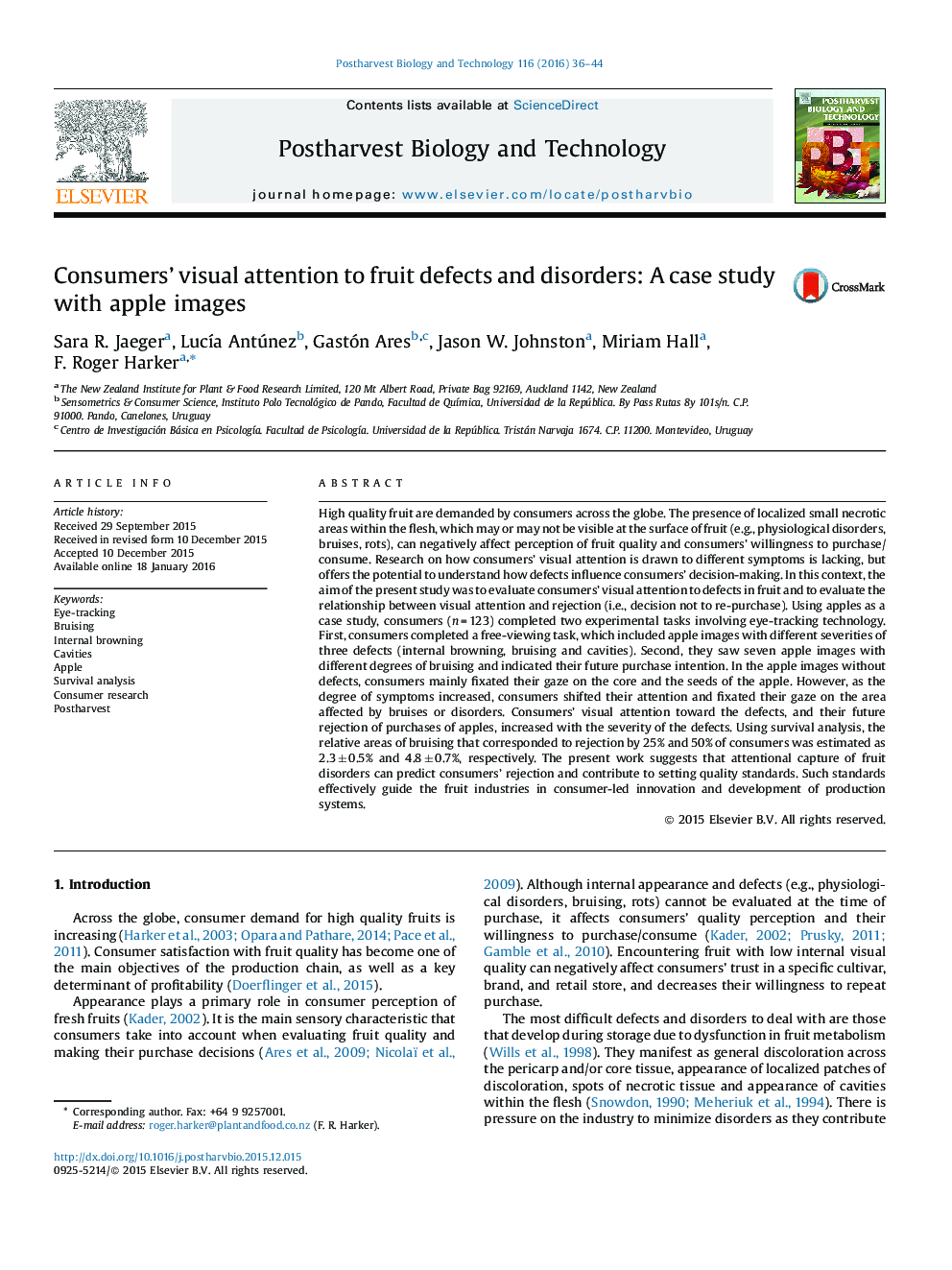| کد مقاله | کد نشریه | سال انتشار | مقاله انگلیسی | نسخه تمام متن |
|---|---|---|---|---|
| 4517814 | 1624978 | 2016 | 9 صفحه PDF | دانلود رایگان |

• Consumers’ visual attention to fruit defects and disorders was studied using apple images.
• Visual attention increased with the severity of the defects.
• Visual attention was linearly correlated to rejection of future purchases.
• A consumer rejection threshold for bruising was estimated using survival analysis.
High quality fruit are demanded by consumers across the globe. The presence of localized small necrotic areas within the flesh, which may or may not be visible at the surface of fruit (e.g., physiological disorders, bruises, rots), can negatively affect perception of fruit quality and consumers’ willingness to purchase/consume. Research on how consumers’ visual attention is drawn to different symptoms is lacking, but offers the potential to understand how defects influence consumers’ decision-making. In this context, the aim of the present study was to evaluate consumers’ visual attention to defects in fruit and to evaluate the relationship between visual attention and rejection (i.e., decision not to re-purchase). Using apples as a case study, consumers (n = 123) completed two experimental tasks involving eye-tracking technology. First, consumers completed a free-viewing task, which included apple images with different severities of three defects (internal browning, bruising and cavities). Second, they saw seven apple images with different degrees of bruising and indicated their future purchase intention. In the apple images without defects, consumers mainly fixated their gaze on the core and the seeds of the apple. However, as the degree of symptoms increased, consumers shifted their attention and fixated their gaze on the area affected by bruises or disorders. Consumers’ visual attention toward the defects, and their future rejection of purchases of apples, increased with the severity of the defects. Using survival analysis, the relative areas of bruising that corresponded to rejection by 25% and 50% of consumers was estimated as 2.3 ± 0.5% and 4.8 ± 0.7%, respectively. The present work suggests that attentional capture of fruit disorders can predict consumers’ rejection and contribute to setting quality standards. Such standards effectively guide the fruit industries in consumer-led innovation and development of production systems.
Journal: Postharvest Biology and Technology - Volume 116, June 2016, Pages 36–44